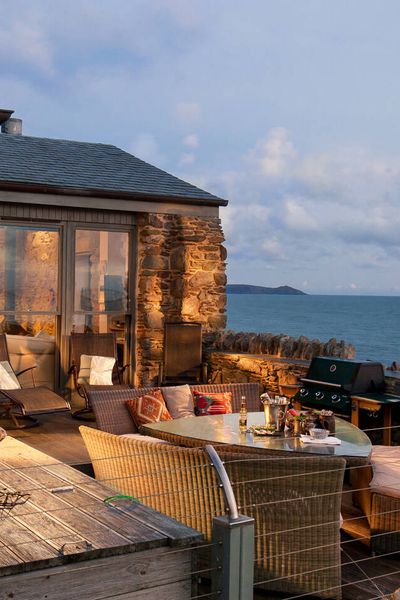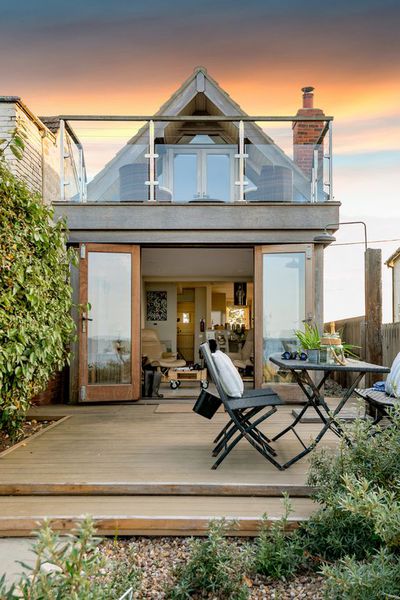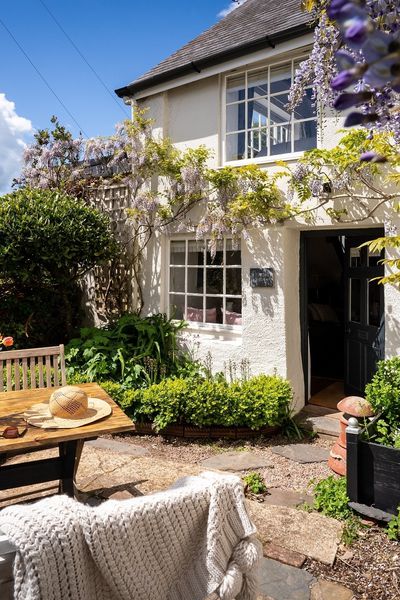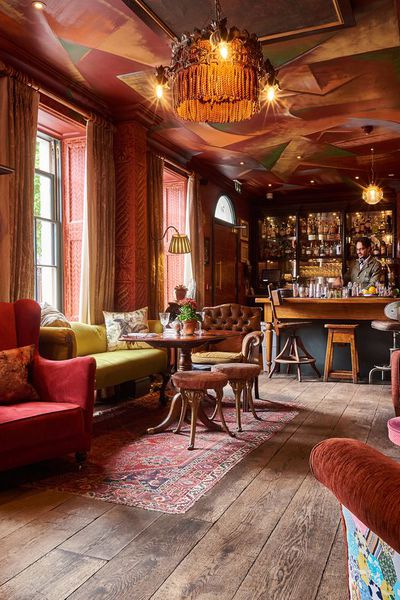Ullswater

You’re directed to Ullswater by a series of brown tourist attraction signs promoting the lake’s most famous feature, the Ullswater Steamers. We’re heading for the gorgeously relaxed hotel right on the shore, Another Place, looking for other ways to enjoy England’s second largest lake. And while it was tempting to stay behind the floor-to-ceiling windows, which bring the mountains right into the pool room and soak in the outdoor hot tub watching rain clouds fill the lake, we’re here to get a flavour of some less cosy options.
Champion open water swimmer Colin Hill runs wild swimming trips, ranging from taster sessions to an all-day experience where you’re taken to the far end of the lake by boat and work your way back. We opted for the former and found ourselves going from freshly-made waffles and hot coffee with the rain safely on the other side of the window, to donning wetsuits in The Sheep Shed and wading into freezing water. After the initial shock of the cold, which Colin had prepared us for with a short demonstration on how to breathe properly, our bodies responded with a tingling glow. We make our way over to the end of a jetty just down the bay and Colin, who lives on the far side of the lake and has been known to swim over for meetings, tells us that he often pauses in the middle just to take in the serenity of being completely surrounded by nature. We expected to enjoy having done it (as opposed to doing it) – but the soft ripple of the water and our own breathing as the rain gently patterned the lake put us in a meditative state even while we swam. With only swans and mountains for company, it’s an unrivalled start to the day and the trip.
For those who prefer to see their lakes from a dry distance, the Ullswater Way, which runs all the way round the lake, is a truly stunning day-long ridge walk providing all the height and drama you’d expect from the Lake District, but without the crowds of Scafell Pike. You could always walk out and swim back, of course. Or there’s always the option to walk a section and catch a steamer.
SEE ALL OUR PLACES NEAR ULLSWATER
“The water makes people keep gasping in air instinctively, the trick is remembering to breathe out properly.” – Colin Hill, champion open-air swimmer
Slow guide to the Lake District Gallery 1
Derwentwater & Keswick

When the photographer you’ve known and trusted for years tells you he visits The Lakes a lot and Derwentwater is his favourite, you go and check it out. Starting in a nondescript residential backstreet in Keswick, Jim lead us up through the woods to Castlehead viewpoint, where we emerged onto a ridge to find the whole lake and surrounding landscape laid out below us after only a short and easy climb. We got down just as easily, via a different route that brought us out on the lake’s forested shore.
A gentle path leads round the shore of Derwentwater in a ten-mile woodland stroll that makes a pleasant contrast to the open peak climbs and rough terrain elsewhere in the lakes. We joined it near Friar’s Crag, where a bench is set in front of a lovely view of some of the lake’s islands, deeply forested and looking more like Thailand (in rainy season perhaps) than Cumbria. Our research hadn’t turned up boats in Derwentwater, but small wooden launches churned soundlessly across the water. Following the path round towards Keswick, we discovered the jetty where the burnished wooden launches waited, bought tickets from the hut by the slipway and were soon chugging gently out onto the lake, waving to other boats and groups of paddle boarders. Seeing the lake from among its lush green islands made it feel like a completely different place from the one we’d been looking down on only an hour before. Jim says that it’s the endless perspectives that mean he’ll “bang the drum for The Lakes for the rest of my life.”
Keswick, set back from the shore of Derwentwater, is a hiking town, set up with B&Bs and gear shops that cater for the active lifestyle of the area. It’s a little less polished than Ambleside or Windermere and its slightly rugged feel made it the perfect home for inspiring travel equipment pioneers Millican. The company was named for legendary local Millican Dalton who, among many other adventures, lived in a nearby cave for a few years. Looking for a resident’s take on The Lakes, we met Millican’s Creative Director Jeff Bowman and his Shiba Inu Loki in a Keswick cafe. Jeff, and Millican themselves, epitomise the spirit that draws people to places like the Lake District. He has come for the lifestyle, for the chance to connect with and care for a place. “I’m not here to sell rucksacks,” he said in his interview for the job. A sentiment that went down well with the company whose products serve only to keep their extensive charitable works going. He talks about exploring the trails of the lakes and finding that even simple strolls to get Loki out of house end up being beautiful walks, without the need for hitting the major trails. Just as we’re leaving, Loki growls at a chef carrying large black bin liners through the cafe. Jeff quietly confesses that, “he doesn’t like bags.”
SEE ALL OUR PLACES NEAR DERWENTWATER & KESWICK
Jim says that it’s the endless perspectives that mean he’ll “bang the drum for The Lakes for the rest of my life”.
Slow guide to the Lake District Gallery 2
Castlerigg
 Jim recommends we check out Castlerigg stone circle, just outside Keswick. It’s instantly obvious why the place was a site of enough significance to invest the enormous effort of erecting the stones. It’s a deeply striking spot, with a single ring of rough boulders on an open plateau and peaks as far as you can see in every direction, gathered like worshippers. The hill must have felt like a ready-made altar to the ancient residents. There are a few people wandering around the unfenced site, as well as an ice cream van parked on the road nearby, that slightly takes the edge off the feeling of timeless majesty. We’ve also heard the place is swarmed with photographers at sunset, all trying to get the same atmospheric shot. Even in the middle of the day though, it’s an affecting place.
Jim recommends we check out Castlerigg stone circle, just outside Keswick. It’s instantly obvious why the place was a site of enough significance to invest the enormous effort of erecting the stones. It’s a deeply striking spot, with a single ring of rough boulders on an open plateau and peaks as far as you can see in every direction, gathered like worshippers. The hill must have felt like a ready-made altar to the ancient residents. There are a few people wandering around the unfenced site, as well as an ice cream van parked on the road nearby, that slightly takes the edge off the feeling of timeless majesty. We’ve also heard the place is swarmed with photographers at sunset, all trying to get the same atmospheric shot. Even in the middle of the day though, it’s an affecting place.
SEE ALL OUR PLACES NEAR CASTLERIGG
Slow guide to the Lake District Gallery 3

Buttermere
From the Buttermere car park is a short walk past fields of hardy Herdwick sheep to the edge of the lake, small by this region’s standards. Just as at Derwentwater, there are paths that lead off round the water and deeper into the hills, but the views and the shaded patches of grass on the shores mean we make mental notes to come back and idle by the lakeside with a picnic. On a grey day it’s more brooding and imposing than when the sun is out, but still a striking sight. The drive from Ullswater to Buttermere, a rolling route which alternates between high passes and deep valleys, is stunning, which is standard when getting around the Lakes, but also short, which is a surprise.
Planning the trip, we worried that we were trying to pack too much in, but we’ve gone from the east to the west in just a couple of hours and without feeling at all rushed. Of course, we aren’t taking on long hikes, it’s too wet to sit down for long and traffic is better in the off season (it’s midweek in May) but we’re finding the whole area more quickly navigable than we’d expected. It’s perfectly possible to take a day trip to the furthest point from you and explore many aspects and experiences of The Lake District.
SEE ALL OUR PLACES NEAR BUTTERMERE
“Not everyone wants to move to somewhere so remote and it’s hard to recruit, but you know you’re getting people who want to live this kind of life.” – Jeff Bowman
Slow guide to the Lake District Gallery 4
Wasdale & Langdale

As you approach Wasdale Head, the landscape changes. The hills seem to close in and lose their colour, surrounding you in tall grey walls. People flock here for Scafell Pike, but driving through on roads that cling to the mountain bases is a fulfilling experience in itself. We’re here to meet Andrew Porter, a National Trust Ranger, who lives and works in Wasdale. He’s part of the team who protect and maintain the countryside, coordinate volunteer programmes and ensure that the many visitors keep themselves and the Lake District safe. We chat to him in the Wasdale Head car park, the drop off point for one of the routes up Scafell Pike, while a brief window of sunshine lights up the bowl of hills around. It’s quiet at the moment, but often overflowing with people coming to scale England’s highest peak. Andrew tells us that although summer is popular, Easter should definitely be avoided, as the limited holiday time condenses all visitors into two or three weekends. He’s also adamant that Scafell Pike itself gets too much press. “People come here, jump out, walk up Scafell and back, then say they’ve been to the lakes, but there’s so much more.” We tell him how we’ve found the Lake District smaller than we thought and he agrees, mentioning how easy it is to travel on foot between the sights, rather than drive to them on the long, looping roads. Farmers even drive their sheep over the hills, to save navigating the tourist traffic.
From where we stand, miles of dry stone wall traces across the hills, even on the steepest slopes, but what used to be divided parcels of land is now the property of just a few farms. “The walls aren’t really a livestock boundary anymore, they’re history. That’s why we maintain them.” Dry stone walling is one of the things he teaches to volunteers on week-long residential courses, revealing a very niche Lakes rivalry as he explains how much harder it is to work with the irregular granite in his area of the park than the neat slabs of slate in the Ambleside region.
SEE ALL OUR PLACES NEAR WASDALE & LANGDALE
“People walk up Scafell and say they’ve been to the Lakes. There’s so much more.” – Andrew Porter
Slow guide to the Lake District Gallery 5

Crystal clear pools and a Cathedral Cavern
Two of our favourite stops on this trip came from tips to places we wouldn’t have thought to research. Apparently they get pretty busy in season, but we had them both to ourselves and felt pretty smug about both ‘discoveries’.
The first were the pools on the trail from the base of the sheer Hardknott Pass (side note: do NOT drive up Hardknott unless your clutch control is exceptional, and even then be wary). The walk starts by the old phone booth at the base of the Pass (there’s limited parking) and goes up the valley, past a farm, for several miles. After 40 minutes it leads to Tongue Pot, a beautiful, wooded wild swimming spot, but there are other pools along the way that make for a scenic and refreshing (ice cold) dip. We braved water that fizzed on impact from a small cascade about 20 minutes’ walk from the parking spot. Gasping for breath and without the wetsuits this time, we didn’t stay in for long. It was hard not to fantasize about hot days in summer with wine chilling in the cool water.
The second was Cathedral Quarry, near the hamlet of Little Langdale. It’s a 20-minute walk from the pub (which has directions in the entrance), clearly signed along a country lane and over a small wooden bridge. The site, an old slate quarry donated to the National Trust by Beatrix Potter in 1929, was rumoured to be an atmospheric beauty spot of a very different kind. After missing the path and accidentally scrabbling around the top of the deep chasm, we found our way down to where great sheets of broken rock left a gap to a ledge above the central cavern, dominated by a huge pillar of rock. We finally found the main entrance we’d somehow missed. The huge chamber was lit by afternoon sun filtering through trees and a hole in one wall; the echo of our voices and the coolness inside felt as church-like as the name had led us to expect. We spent a while examining dynamite drill holes, feeling the sharp angles of the blasted stone and wondering nervously if the uneven column in the middle was actually holding the ceiling up, before getting back on the road.
Windermere Jetty

After a night in charming Elterwater we headed for one last bracing dip. We chose Rydal Water, walking through the woods and past surprisingly exposed fields of bluebells to a rocky beach. Our final stop was Windermere Jetty, the impressive new museum right on the lakeshore, where the bright, spacious cafe thankfully served hot coffee. Recently opened after a rebuild on the old Steamboat Museum site, it’s a great place to feel the history of the area, with views from the dock, a model boating lake and exhibits that you don’t just look at, but can actually ride on. We wander among dart-like crafts that held speed records, ancient rowing boats and everything in between, while we wait for our chance to sail on Osprey, the steam launch built in 1902 and restored by the museum’s team over ten years. Osprey is a living piece of heritage, letting you cruise the lake as people have done for centuries. Our captain, Ian, explains that the engine has a top speed not much above a walk, but the leisurely pace is exactly the point. This isn’t a water taxi, it’s a scenic tour of the islands and the lakeside scenery. From his position by the engine, he points out a second steering wheel set above the benches that form the seating area in the prow. It’s where the pilot would have sat, keeping the boat on track but able to chat to guests as drinks and food were served. A squat cylinder above the engine housing turns out to be a Windermere Kettle, which channels steam to boil water for tea. It still works and will soon, once again, serve hot drinks to passengers on Osprey, over 100 years since it was installed.
“It rains a lot here, but that’s kind of the point. It’d be The Holes in the Ground District otherwise.” – Ian

Much more to see
We left The Lakes with the two contrasting feelings – that we’d covered much more than we’d imagined, but there was still so much we’d missed out on. Without time to engage in much hiking, we’d looked for and found other ways to explore and experience an incredible landscape. Back in the office, we began to miss the idea of starting the day with a bracing plunge into water fresh off the hills. We were determined to return and make it all the way to Tongue Pot, reach the Gummer’s How viewpoint and take on the full extent of the challenging Buttermere Horseshoe ridge walk.
Slow guide to the Lake District Gallery 6
SEE ALL OUR PLACES IN THE LAKE DISTRICT
We stayed at…
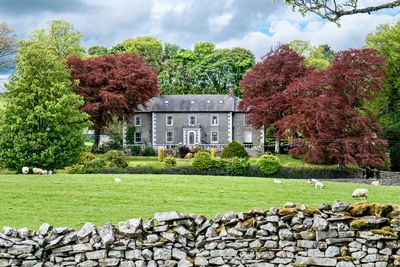
Lake District Holidays
Choose from self-catering cottages set high up in the mountains, hotels right on the lakeside, cosy bed and breakfasts overlooking fells, and friendly inns perfect for a delicious feast after a day of hiking.
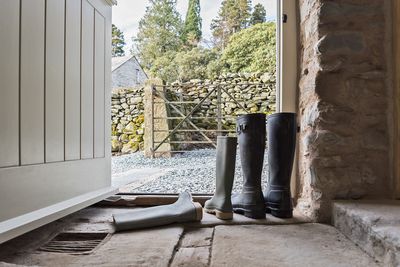
Places in the Lake District
A cosy, traditional inn beside Keswick’s old Moot Hall, with deliciously hearty food and excellent cask ales. It’s family and dog-friendly, and the bedrooms are comfortable and modern. The perfect base for exploring Keswick and its abundance of walking, hiking and festivals.

Dog-friendly breaks in the Lake District
These places welcome your four-legged friend, and there’s no better place to bring them than the Lake District. Some places provide blankets and bowls, others offer a welcome hamper, treats and even chewy toys – check the booking information of the place for details.
